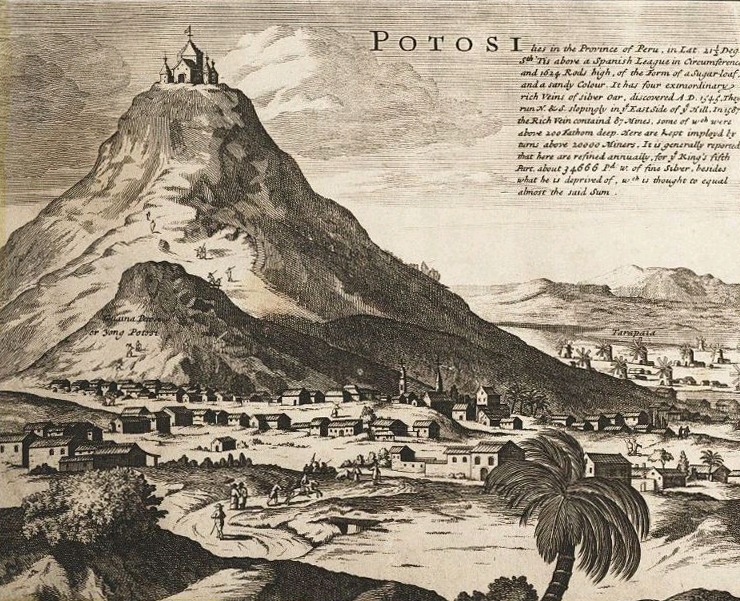To the south lies a colony which, though it pays homage to Metropole as well, differs in many ways of note. It is mountainous, and dry, and conditions there are no good for growing cash crops, although native farming traditions have proven well productive even past the conquest. Where the land is not as good for plantations, there is silver, though.

A view of Quito ca. 1650, by Miguel de Santiago. See here for details.
Unlike the gold in the jungle, picked to the last nugget, veins remained rich in silver from then to this day, and silver it was to bring the elves living there woe. They fared no better than their brethren to the north, unprepared for what was to come, incredulous to believe terrible news brought by the runners over – now long in disuse – the single ridge-along road linking these two of their domains. Stones of their fortresses’ walls were cast aside, peaktop temples pillaged and broken, no longer to hail the forces of sun and death and lightning, valley recluses torn and left for pig farmers to house their herds where elven kings once dwelt and hosted their courts.
The Vice-Regency of the Mountains rests now upon silver to ship back to Metropole, for little else the conquerors cared for once blinded by the luster. Those whose fathers have come from Metropole are rare, and stay on the coast, where a good port city was built for them to enjoy the riches of the land. They are a proud people, perhaps helped with the spirit of the old elven pride, for in their hearts they see themselves as the elven kings’ rightful successors, much as they would loath to admit in the open. They, in turn, see the colonials to their north as gauche.

Inset view of Potosi by Bernard Lens, from Herman Moll’s Map of South America (ca. 1715). Legends of a mountain made wholly of silver which drove many an expedition into the South American interior seem to have had a good grounding in truth – Cerro Rico de Potosí was, almost without exaggeration, a mountain of silver that the entire Spanish empire subsisted on.
As they do so, in the pleasant capital on the coast, further back from the sea the silver is mined. There are many of them who toil, natives, elves, half-elves, whether driven from villages to do their part, or choosing so on their own accord on a chance it is better still than what little subsistence is provided for them. They are free, or half-free, peons and serfs rather than slaves, but many slaves fare better. Rockfalls take their lives; mercury takes their health; new laws of the land and missionaries of the Assembly take their old customs. Some make do and carry on. Others grumble.
The Vice-Regents of the Mountains claim all is under their control, or barring that, their boot; that there most certainly are no hidden cities high in the mountains, where only elves know how to dwell for long unsuccumbing to thin air, and old mummified lords of ages past were drawn from their tombs to rule in their killed descendants’ stead. The locals are not biding their time, as the mountaintop bases gather strength; that none of those who flee settled life go upwards, wishing for their herbal remedies to keep them walking until they reach their aims, or gather in bands to assault remote outposts. Those of purest elven blood do not wish to cleanse the land of the invaders’ taint. Surely, there was the occasional rebellion; a normal occurence, and each such time easily put down with hardly a disruption to mining outputs, as far as the Vice-Regents are concerned.

Machu Picchu, the quintessential Incan secret city in the mountains. This photo was taken at sunrise by one Allard Schmidt from the Netherlands, in 2005.














